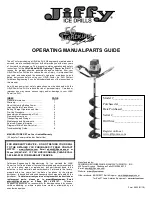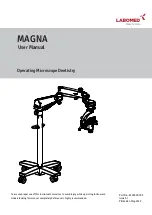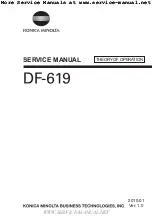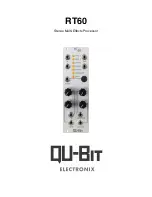
REM - G
RAIN
V
AC
VR12
4. O
PERATION
4.8. G
RAIN
V
ACUUM
O
PERATION
P
ROCEDURE
9000-00-0042 R3
45
4.8.1. Applications & Characteristics of Hoses & Tubes
The GrainVac is supplied with 10 standard hoses & tubes. Proper use of hoses & tubes
will maximize the performance, capacity, and life of all hoses & tubes.
Note:
Hoses & tubes are a wear item and are
NOT
covered by the warranty.
• One(1) 8” x 5’ (203 x 1524 mm) aluminum tube and two(2) 8” x 7-1/2’ (203 x 2286
mm) aluminum tubes. These tubes are most commonly used to enter the bin once
the grain level is low enough that clean-up is required. These tubes have the least
amount of friction and therefore promote the best capacity and longevity of all the dif-
ferent hoses & tubes.
• Four(4) 8” x 4’ (203 x 1219 mm) stainless steel flexible hoses. The stainless steel
flexible hoses give you good capacity with limited movement. This is most commonly
used for direct loading from bins through small doorways, where the solid tubes will
be difficult to handle. Often these hoses are used in combination with an aluminum
tube and the bin load-out nozzle to reach piles far back in the bin.
• One(1) 8” x 29” (203 x 737 mm) stainless steel flexible hose. This hose is ideal to
attach directly to the GrainVac inlet to allow for easy movement when close to a bin.
• One(1) 8” x 7-1/2’
(179 x 2286 mm) flexible rubber/durathane (basketweave) hose.
This hose is best used for final clean-up.
• One(1) telescoping inlet (always mount on GrainVac inlet). This tube is adjustable
with a useable travel length of 35” to 51” (889 mm to 1295 mm). It can be used at
any time. Adjustable tube length makes GrainVac operation simpler.
The hoses & tubes must always be securely clamped in position to minimize air leakage.
Make sure that any hoses & tubes are slid all the way into the clamps. Air leakage can
significantly reduce machine capacity. Maintain hose & tube clamps in good condition.
4.8.2. The “9 S’s of GrainVac Performance”
S1: Short –
position the GrainVac as close to the source of the material as possible and
keep the length of piping
short
. The shorter the distance, the less piping friction and the
greater the GrainVac capacity.
S2: Smooth –
smooth pipes (interior walls) also reduce resistance to air and grain
movement. Where possible, use aluminum tubes first, then stainless steel flex hoses,
last of all use rubber or urethane (for cleanup only), as this convenient lightweight hose
is not at all
smooth.
S3: Straight –
a 90° bend in the piping is the equivalent of adding 20’ (6096 mm) or
more of straight piping. Reduce bends in the piping as much as possible, and keep the
grain moving
straight.
S4: Slope –
if possible, lay out the piping to keep it at the same height over the length of
run. Resistance to material flow is created in piping “hills and valleys”. Grain does not
move uphill easily, so remember to minimize the
slopes.
S5: Seal –
air leaks in the GrainVac reduce capacity at the nozzle end of the pipe. Keep
all neoprene foam seals (on the auger flanges and body doors and ports) in good
condition and keep the door and hose clamps adjusted snug in order to ensure a good
air
seal.
S6: Suction –
grain moves only when air moves. (No flow, no go). You may be required
to retract the hose end or nozzle slightly from the grain pile, meter the grain into the
nozzle, or pull the nozzle air slide open to ensure no loss of
suction.
Содержание GrainVac VR12
Страница 30: ...3 TRANSPORT REM GRAINVAC VR12 3 2 ATTACHING TRANSPORTING GRAINVAC WITH TRACTOR OR TRUCK 30 9000 00 0042 R3...
Страница 70: ...5 MAINTENANCE REM GRAINVAC VR12 5 4 MAINTENANCE PROCEDURES 70 9000 00 0042 R3 Figure 5 23 Gearbox Removal...
Страница 86: ...6 SERVICE REM GRAINVAC VR12 6 6 DRUM REMOVAL MAINTENANCE 86 9000 00 0042 R3...
Страница 90: ...7 STORAGE REM GRAINVAC VR12 7 3 REMOVING FROM STORAGE 90 9000 00 0042 R3...
















































